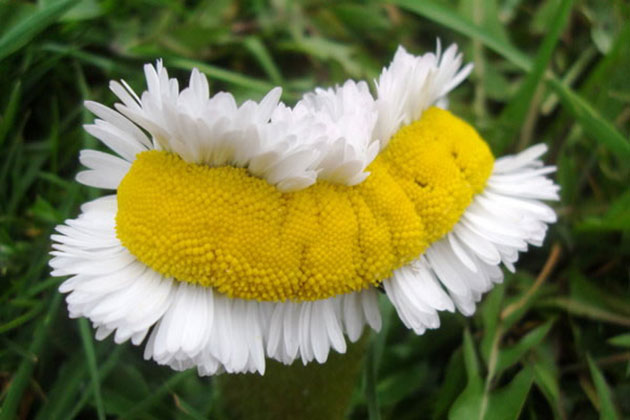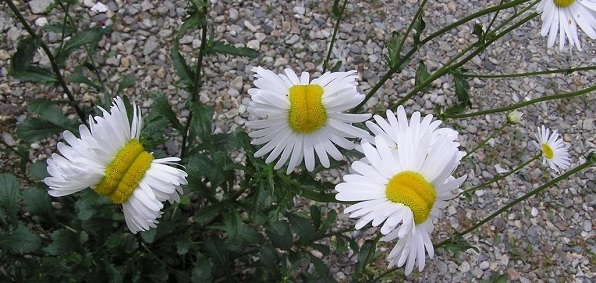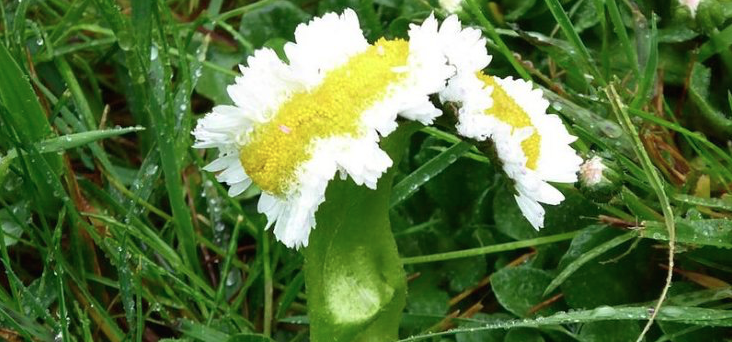The headline above is certainly not the one that the Fukushima troubleshooters in Tokyo wanted to read. Nevertheless, the photos of the ‘mutant daisies’ shown below, which were taken at a location 65 miles from the nuclear disaster site, do not lie. Both TEPCO and the Japanese government now have a new crisis to deal with.
“‘The images, posted in May by Twitter user @san_kaido of Nasushiobara City, located about 65 miles from the disaster site, show common daisies that appear to have been affected by radiation exposure, oddly fused together like Siamese twins, reports the Weather Channel.’” [1]
Enviromedica Nascent I... Buy New $37.01 (as of 05:05 UTC - Details)
Still, there are very few who are aware, after more than four years since the Fukushima nuclear catastrophe which occurred in 2011, that three separate meltdowns actually took place. Consequently, there are various vectors of dissemination of nuclear radiation which continue to ooze from the disaster site. Not only is contaminated water continually released into the Pacific Ocean, but the groundwater around Fukushima has also been adversely affected.
Because of the geological formation that the Fukushima Power Plant was constructed upon, there are opportunities for wastewater to enter the water table. Once this occurs, the contaminated water will move through natural conduits made up of myriad fissures, cracks, and crevices in the surrounding geological formations. Ultimately, this radioactive water can make its way to a great distance many miles from the nuclear plant.
There is also speculation about the hydrological cycle recirculating ionizing radiation during 2011.
Because of the nuclear explosion at Fukushima in March of 2011, the airborne radioactivity became vulnerable to being rained back down to the ground, as well as carried to different parts of Japan via the changing wind patterns. Given that wind and rain will always deliver their invisible contents on the land below, it is easy to understand how the vegetation becomes susceptible to such radioactive assaults.
“‘The right one grew up, split into 2 stems to have 2 flowers connected each other, having 4 stems of flower tied beltlike,’ according to Fukushima Diary. ‘The left one has 4 stems grew up to be tied to each other and it had the ring-shaped flower. The atmospheric dose is 0.5 μSv/h at 1m above the ground.’” [1]

Flowers and other foliage are particularly delicate and sensitive to damaging effects of radionuclides. Because of their fragility, flowers are much more apt to express genetic mutations which have occurred after exposure to gene-altering radiation. The above photo captures the profound alteration in genetics which necessarily precedes such dramatic examples of deformed daisy flowers.
 Now Supplements, Potas...
Buy New $7.68 ($0.13 / Count)
(as of 01:00 UTC - Details)
Now Supplements, Potas...
Buy New $7.68 ($0.13 / Count)
(as of 01:00 UTC - Details)
 NOW Supplements, Vitam...
Buy New $9.92 ($0.04 / Count)
(as of 04:43 UTC - Details)
NOW Supplements, Vitam...
Buy New $9.92 ($0.04 / Count)
(as of 04:43 UTC - Details)







